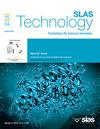Application of 3D printing imaging technology in the treatment of bronchopleural fistula with individual customized bronchial occluder
IF 3.7
4区 医学
Q3 BIOCHEMICAL RESEARCH METHODS
引用次数: 0
Abstract
Background
Bronchopleural fistula (BPF) is a common and severe complication in thoracic surgery, characterized by its complex nature and high mortality rate. Bronchial occluder is one of the effective methods for the interventional treatment of BPF under bronchoscopy.
Objective
This work was to evaluate the adoption and efficacy of individualized bronchial occluder designed with the assistance of 3D printing technology in the treatment of BPF.
Material and Methods
This single-center, retrospective study included 60 patients (35 males and 25 females, aged 40–78 years, without severe dysfunction of major organs or history of mental disorders) diagnosed with BPF between January 2020 and December 2023, who received different treatment and were divided into the Control Group (CG, receiving thoracotomy treatment), Therapy group-I (TG-I, receiving septal occluder treatment), and Therapy group-II (TG-II, receiving treatment with 3D-printed individualized bronchial occluder). Serum levels of high-sensitivity C-reactive protein (hs-CRP) and procalcitonin (PCT) were measured by enzyme-linked immunosorbent assay preoperatively and at 1, 4, and 12 weeks postoperatively. Daytime cough scores were assessed according to guidelines, pain scores were evaluated using a visual analog scale, clinical efficacy was determined based on consensus criteria, and complications were recorded. Quantitative variables were compared using one-way ANOVA with Bonferroni correction, while categorical variables were analyzed by chi-square or Fisher’s exact test.
Results
the overall clinical efficacy was higher in TG-I and TG-II versus CG, with TG-II showing a greatly higher efficacy after twelve weeks of treatment (P < 0.05). Relative to CG, both TG-I and TG-II demonstrated lower serum levels of hs-CRP and PCT, markedly reduced cough and pain symptom scores, and markedly lower complication rates (P < 0.05). Additionally, TG-II resulted in notably lower serum inflammatory markers, cough and pain symptom scores, and complication rates versus TG-I (P < 0.05).
Conclusion
The 3D-printed personalized occluder (TG-II) significantly reduced postoperative inflammatory responses and alleviated cough-associated pain, demonstrating superior short-term efficacy and safety compared to conventional treatment (CG) and commercially available occluders (TG-I). This approach offers distinct advantages for the personalized precision treatment of BPF. However, further clinical studies are required to validate its potential as an alternative to surgical repair.
3D打印成像技术在个性化支气管封堵器治疗支气管胸膜瘘中的应用
背景:支气管胸膜瘘(BPF)是胸外科手术中常见且严重的并发症,其性质复杂,死亡率高。支气管闭塞术是支气管镜下介入治疗BPF的有效方法之一。目的:评价3D打印技术辅助设计的个体化支气管封堵器在BPF治疗中的应用及疗效。材料和方法:本单中心回顾性研究纳入2020年1月至2023年12月诊断为BPF的患者60例(男35例,女25例,年龄40-78岁,无严重主要器官功能障碍或精神障碍史),接受不同治疗,分为对照组(CG,接受开胸治疗)、治疗组i (TG-I,接受间隔闭塞治疗)和治疗组ii (TG-II,接受3d打印个性化支气管封堵器治疗)。术前、术后1、4、12周采用酶联免疫吸附法测定血清高敏c反应蛋白(hs-CRP)和降钙素原(PCT)水平。根据指南评估日间咳嗽评分,使用视觉模拟量表评估疼痛评分,根据共识标准确定临床疗效,并记录并发症。定量变量比较采用Bonferroni校正的单因素方差分析,分类变量分析采用卡方或Fisher精确检验。结果:与CG相比,TG-I和TG-II的总体临床疗效更高,其中TG-II在治疗12周后的疗效明显更高(p结论:3d打印个性化封口器(TG-II)显著降低了术后炎症反应,缓解了咳嗽相关疼痛,与常规治疗(CG)和市售封口器(TG-I)相比,具有更优越的短期疗效和安全性。这种方法为BPF的个性化精确治疗提供了明显的优势。然而,需要进一步的临床研究来验证其作为手术修复替代方案的潜力。
本文章由计算机程序翻译,如有差异,请以英文原文为准。
求助全文
约1分钟内获得全文
求助全文
来源期刊

SLAS Technology
Computer Science-Computer Science Applications
CiteScore
6.30
自引率
7.40%
发文量
47
审稿时长
106 days
期刊介绍:
SLAS Technology emphasizes scientific and technical advances that enable and improve life sciences research and development; drug-delivery; diagnostics; biomedical and molecular imaging; and personalized and precision medicine. This includes high-throughput and other laboratory automation technologies; micro/nanotechnologies; analytical, separation and quantitative techniques; synthetic chemistry and biology; informatics (data analysis, statistics, bio, genomic and chemoinformatics); and more.
 求助内容:
求助内容: 应助结果提醒方式:
应助结果提醒方式:


